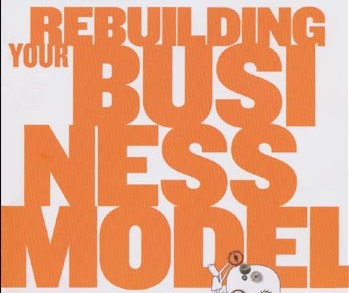Publisher” Harvard Business Review Press
Book Review by: Nano Khilnani
Even businesses that have had long records of success reach a point where revenues stop with the upward spike, taper off and even start a downward slope, point out Paul Nunes and Tim Breene in Reinvent Your Business Before It’s Too Late, an excellent article in this book containing a series of insights on how to rebuild your business model when it is no longer working as well as it once was.
They emphasize the imperative of periodic reinvention for a company to thrive for a long time. When there is a persistent flattening in your sales chart, it is time to discover the reasons why, and do something to regain the upward movement.
Nunes and Breene write that managers of high performing firms take three important actions to sustain revenue growth: track the basis of competition in their industry, renew their capabilities, and nurture a ready supply of talent.
In their article Are You Ignoring Trends That Could Shape Your Business? Elie Ofek and Luc Wathieu point out at least three observations affecting today’s economy: digital products playing an increasingly central role in consumers’ lives, increasing cautiousness about spending money in the Great Recession, and growing public concern about global warming.
The authors of this highly useful article point to the “gold in trends.” They cite the example of Nike teaming up with Apple to launch Nike+, a digital sports kit consisting of a sensor attached to your running shoe and a wireless receiver that connects to your iPod.
When you jog and listen to your favorite music, the sensor tracks and transmits to your iPod your speed, distance and calories you’ve burned. And you can upload this data on Nikeplus.com on your computer and track your personal athletic progress.
In Finding Your Next Core Business Chris Zook acknowledges that often it is difficult to realize when your core business must change, with some companies sticking too long to their eroding core in the face of competition selling better or lower-priced products, or abandoning their core business too easily and quickly.
Zook points out a better way. He shows you how to find the correct path. First, recognize when it is truly time to find a new core. Your core business is not growing perhaps because your growth market is saturated. Second, look at the hidden assets of your company that your competitors do not have and utilize them to define a new core that will bring you growth.
He cites the example of American Express mining their customers’ buying habits and going after certain market segments, after its core charge-card business was ailing.
Joseph L. Bower and Clayton M. Christensen show how large companies miss the opportunities to new revenue and profit streams in Disruptive Technologies: Catching he Wave. When a new product is being thought out and developed at these firms, their focus is on their existing customers as their market for the new product. It should be on creating a new and different market for their new product.
They cite the examples of Goodyear and Firestone entering the radial-tire market too late, Xerox letting Canon create the small-copier market, Bucyrus-Erie allowing Caterpillar and Deere to take away the mechanical excavator market, and Sears giving way to Wal-Mart.
In Mapping Your Innovation Strategy, Scott D. Anthony, Matt Eyring and Lib Gibson state that you can innovate better, faster and cheaper by following these steps: develop and execute an innovation game plan; pick your playing field – markets where the best opportunities are hiding and in which you are strong; analyze major innovations in those markets to identify criteria your opportunity must meet to succeed.
With the pace of change growing increasingly faster, Rebuilding Your Business Model is a must-have book if you want to stay ahead of your competitors.







